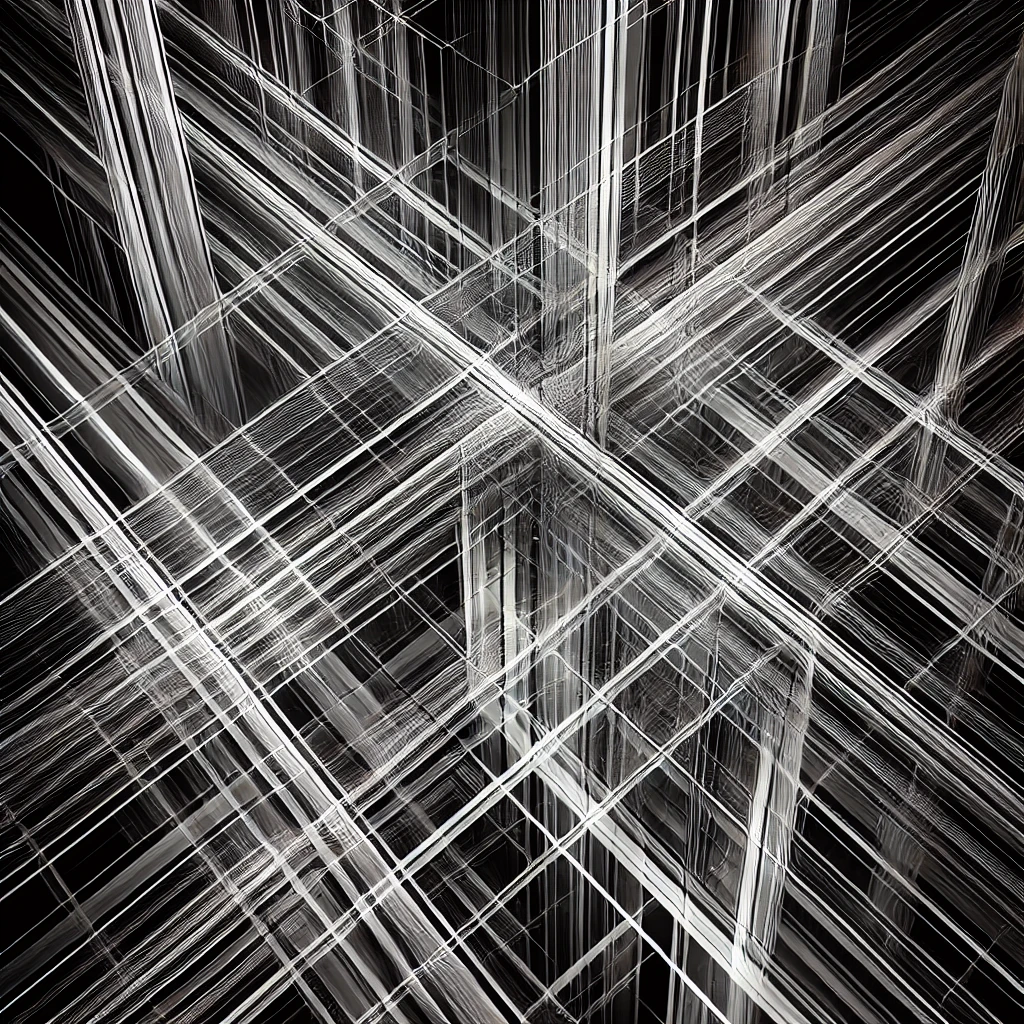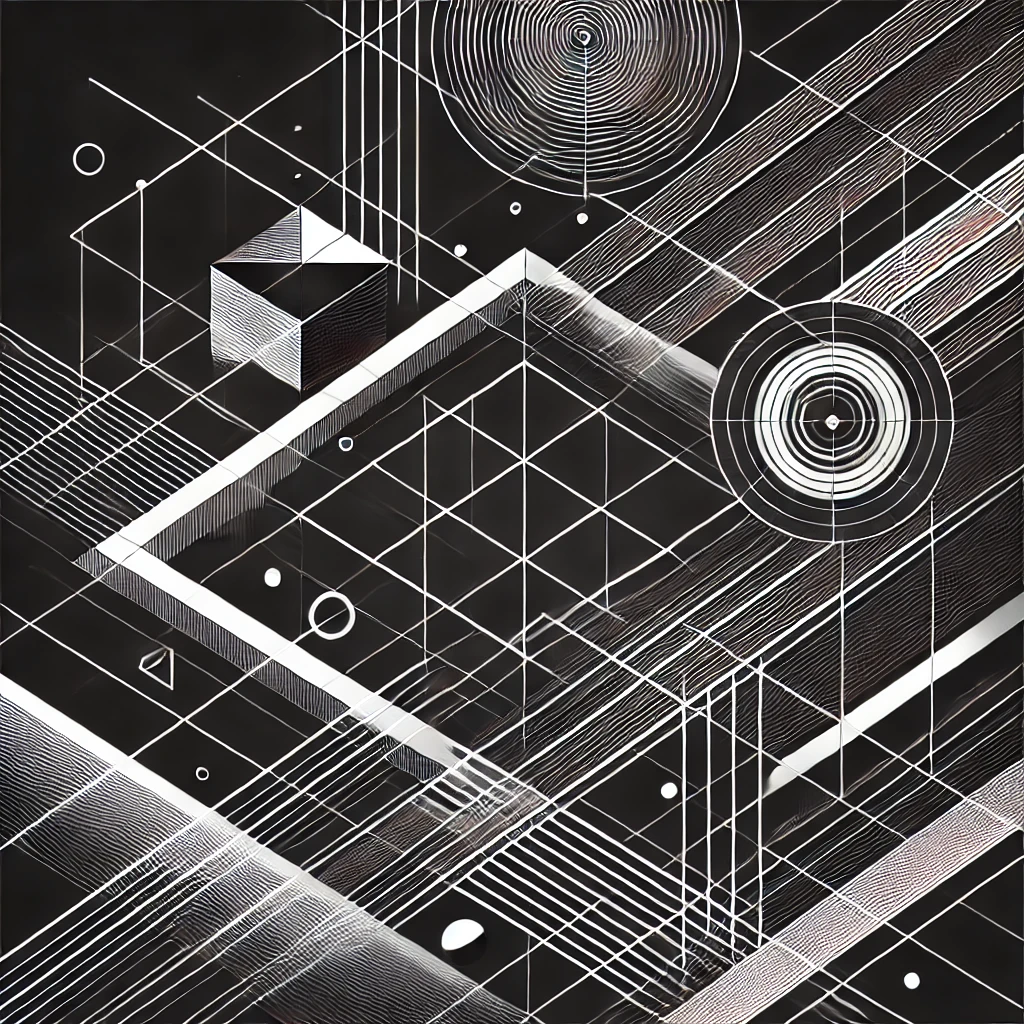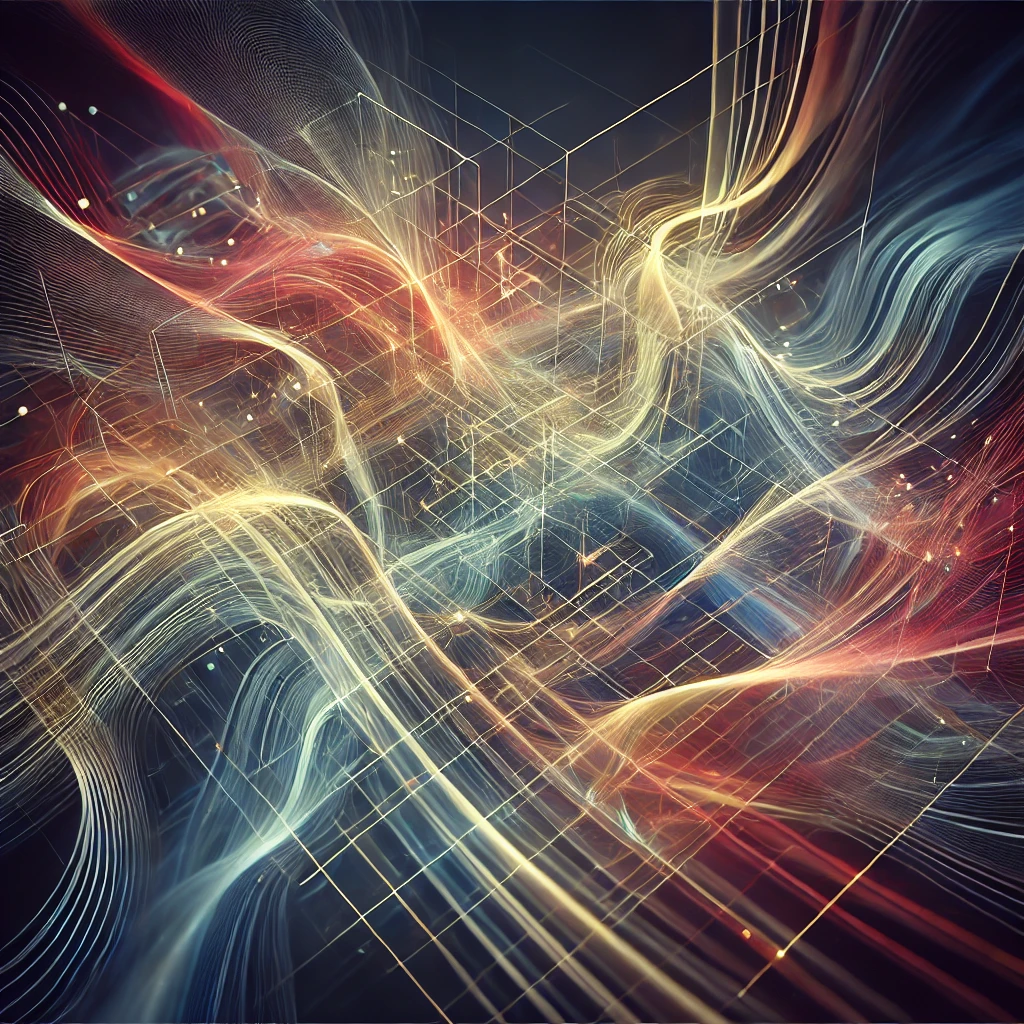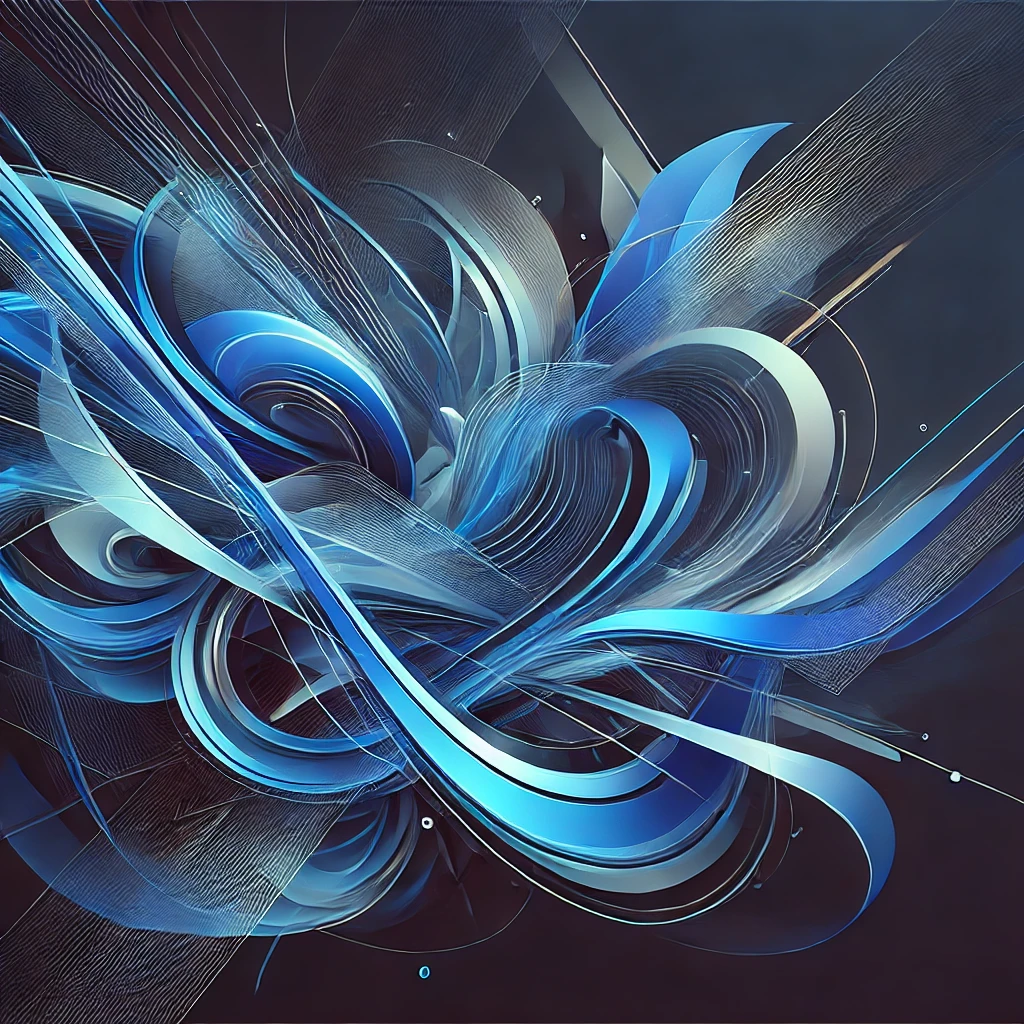Greetings, everyone. I am Handa, from the Noosology Research Institute at Musashino Gakuin University. I’m delighted that you are watching this video. Well, last time, I briefly introduced the genealogy of 4th-dimension thought. From now on, I will continue our discussion by following the flow of the previous two videos. In those videos, under the title of “Can we ever have a view in ‘view theory’?”, I discussed the view theory of Shigeki Noya, one of the leading philosophers in Japan, as an entrance to Noosology.
In that context, I presented the bold hypothesis that there is no such thing as our point of view in 3-dimensional space. We are not looking at things in 3-dimensional space, but rather, we are looking at the entirety of 3-dimensional space in one plane from outside of the 3-dimensional space. And at that time, we may be inhabitants of the 4th dimension. I have discussed this through Shozo Omori’s concept of the “face-body bifurcation.” Let me show you the diagram here again.
It is obvious if you look at it. What I meant is that when you look at the three coordinate axes that define 3-dimensional space in this manner, the viewpoint of observation itself is in the direction of the 4th dimension. (This is the direction in which you are looking at those intersecting three straight lines representing 3-dimensional space.)
In this video, I will discuss various implications of this 4-dimensional space, which has a perpendicular orientation to 3-dimensional space, with a more specific explanation. By doing so, you will be able to intuit where Noosology is leading your thinking. The talk is titled “Depth as the 4th Dimension: On the Location of Ontological Difference.” Thank you in advance for your kind attention.
Let’s begin by discussing Magritte’s work, “Not to Be Reproduced,” which I mentioned in the previous video. As I have told you before, in this work, think of the space inside the mirror as a 3-dimensional space. Then, the mirror itself becomes a surface plane as his viewing space. The person looking into the interior of the mirror, the 3-D space, from the outside, the 4-D space, corresponds to the real subject as a true observer. It is his “Self.” If you imagine the person’s gaze outside this mirror, you will immediately see that he has his own location perpendicular to the 3-D space.
To make the significance of “one’s location” clearer, let us now add an image of an apple in the mirror. Now, what do you think? By inserting the image of the apple, we can immediately see that the relationship between the physical body, which we usually think of as the subject in 3-dimensional space, and the apple, which is considered the object, turns out to be just two objects in the 3-dimensional space.
For example, please imagine yourself as the person in the picture, then move away from the apple, step closer to it, or circle around to look into it. If you repeatedly visualize these situations within the composition of Magritte’s work in your mind, you will become aware of the existence of a higher perspective that is looking at the material object and your material body from out of nowhere. This awareness is made possible by a 4-dimensional viewpoint within you that is looking into the mirror from the outside. Thinking and viewing on a larger scale will let you intuitively understand the significance.
For example, I was in Tokyo on a business trip yesterday. Now I am back in Hakata, Kyushu, relaxing at home. In this way, we routinely experience the
recognition of our actions, which are sequentially changing their temporal and spatial locations, as a matter of course. In other words, I naturally recognize how my physical body is moving around in time and space.
This kind of recognition is possible because of the existence of our gaze from a 4-dimensional space. If we give a clear outline to our perception and recognition, we can distinguish between the space in which we exist as the physical body and the space in which we exist as the mind.
In fact, space-time has little meaning if we try to capture our position in our internal senses. Because where I am, so to speak, is always just “here and now.” Wherever I am, it is “now” and “here.” It is no exaggeration to say that this “here and now” secures my existence.
“Be Here Now” was a popular catchphrase of the counterculture movement in the 1960s. In Old Japanese, it translates to “Naka-Ima.” This Shinto term describes a sense of time. Therefore, in the space of “Naka-Ima” or “Be Here Now,” there is no image of movement in the external world, such as “I am moving in time and space.”
Additionally, due to such absolute immobility with respect to the external world, the mind’s location as the 4th dimension can be considered transcendent, capable of viewing anywhere in time and space. However, it is not easy to grasp the sense of this immovable position in 4-dimensional space clearly. This is because, as Kant argues, time and space, which we are familiar with on a daily basis, are also our intuitive form. Moreover, we are accustomed to thinking about things and events based on such external molds of time and space, which we do not know from where we are receiving them.
In Noosology, we refer to this mode of perception based on such 3-dimensional recognition as the Human Gestalt. As you may be aware, the term “human” in this context is used to criticize the materialistic worldview that has dominated humanity since the modern era. In the Noosology’s view, what makes us “human” is not our species origin as homo sapiens, as anthropology would have it. It’s absolutely not. I believe that such categorization is just another piece of biased knowledge produced by the Human Gestalt.
What underlies the organization of this Human Gestalt is a system of representation closely related to our concept of matter. Simply put, think of it as our way of cognizing objects. It means that we habitually treat a phenomenon, what is manifested before us, or what we perceive as an object. We are accustomed to recognizing things as objects. This system of representation is an unconscious system that organizes our cognition in such a way. Within this system, our image of matter is fixed to itself as a material object so rigidly that it cannot change.
In other words, the manifold fluidity of nature, which arises as a phenomenon in our consciousness, has been generalized within a 3-dimensional space under the concept of matter. You can see it easily in this picture. The relationship between the person in the mirror and the apple appears simply between those two material objects in the 3-dimensional space. The factor that creates the difference between the seer and the seen is nowhere to be found. In Heidegger’s words, everything is arranged in the same phase of “real existence,” and the crucial ontological difference is obliterated in this space.
In simpler terms, everything has become “what exists.” In other words, a powerful and pervasive principle of subjectivity has been established, in which
all subjects and objects are considered objects, and we are trapped within it. In my opinion, this powerful and pervasive principle of subjectivity can be interpreted as the being that the West has called God throughout its history. Noosology holds that this tendency to regard the totality of the natural world as the Creation by God is the most significant factor in our inability to experience nature as physis.
In this sense, we must relieve ourselves from such a concept of God. The human concept of God has distorted the way the world works. That may sound too extreme, so I should correct my tone of voice. I try to claim that we must get out of the world of “existence.” The seer’s body is a material existence, so it is certainly in the category of what “exists.” However, those who are native to the Japanese language must indeed feel awkward when we call the seer “who exists.” That is because, in the Japanese notion, we are not “existing” but “being.” It is crucial to Noosology to intuit the difference between “existing” and “being.”
In Heidegger’s terms, it corresponds to the distinction between “real existence (Seiende)” and “determinate being (Dasein).” “Determinate being” is the one that understands “what exists” exists. In simpler terms, it is the irreplaceable “I,” or Self. It does not refer to a human as a physical entity. Rather, the Self is the being that relates one’s immanent and external experiences in presence. We can never generalize about the Self by mixing it up with the concept of a human, as there is an absolute difference between a human, a physical existence as “the other,” and a Self that is aware of its existence as such.
In that sense, calling humanity homo sapiens, the general view of humans that confines countless selves within 3-dimensional space is fundamentally flawed in its way of thinking.
In other words, our current conception of space does not accommodate the notion of “being” or the Self. In order to raise our awareness of the location of the Self as “being,” we must excavate, with just like the careful hand of an archeologist, the vertical gaze viewing from outside the mirror into the 3-dimensional space inside the mirror as depicted clearly in the Magritte’s work, from the stratum of the unconscious.
By overcoming our intentionality toward 3-dimensional objects, we have to think metaphysically about our unconscious in the higher dimension, which raises our personal self to the position of “being,” or Self. It is an entirely new, transcendental
thinking. We must create such a way of thinking for the coming age.
So, what kind of space is this 4-dimensional space, which can be called the gateway to the stratum of the unconscious? Let us now expand our image of it.
As Shozo Omori has said, “The perceptual front is the mind,” It is thus necessary to consider that the most fundamental function for defining our immanent experience lies in the direction of the 4-dimensional gaze, which sees this 3-dimensional space as a plane. In other words, the 4-dimensional space is not an extending, external space like the 3-dimensional space. It is the first important point.
It is evidenced by our inability to see our line of gaze as a line segment. It can never be seen as a line segment, can it? In other words, the 4th dimension is not a space of “width” which can be objectified. It corresponds to the space of “depth” in terms of where it appears in our perception. Depth is invisible to us. The line segment in the depth direction always appears as a single identical point. It is within this observation, which can never be observed as a line segment extending in the direction of width, that the 4-dimensional space is alive.
Please recall my previous talk about Henry More. He believed that our spirits are attached everywhere in 3-dimensional space as the direction of the 4th dimension. I think I mentioned this. Additionally, More referred to the thickness of this invisible 4-dimensional direction as “essential density” or “spissitude.” What do you think? It seems to overlap with Shozo Omori’s idea that the perceptual front is the mind. To more fully and philosophically imagine this idea, we need to examine Bergson’s idea.
It is Bergson’s concept called “pure duration.” Pure duration is a term that originally meant “an occasion of consciousness.” It refers to the continuous flow of time as perceived in our mind. However, the word “flow” implies a movement through the space of “width,” so it would be more accurate to understand this concept, pure duration, as the time that doesn’t flow.
It is the kind of time that grasps and holds the flow of time all at once. Or it is the time on the side of the perceiver who senses the flow of time. Deleuze later replaced this Bergsonian pure duration with “pure past,” which he regarded as the pure realm that grounds the passing of the present. It is a pure past —- that’s an interesting way of putting it. Deleuze then went on to purify this concept into a more radical ontological concept. The 4-dimensional space that Noosology imagines is very close to Deleuze’s concept of duration as the pure past.
Deleuze discussed this “pure past” in the following terms, which I have summarized into four parts.
First, the pure past is simultaneous with the present. This refers to the sense that “time is always now.” Consider it as something that suggests that it is always “now” in relation to the present, which appears one after another instantaneously. Without this sense of “always now,” we would not perceive time flowing away nor the sense of the present moment.
Second, the pure past itself does not pass away, nor does it arrive. It is natural because it belongs to the perceiver, who experiences the passage of time. This means that the pure past is always in a transcendental position from the passage of time.
Number three. The pure past is not something that has existed, but it is something that continues to be. When we think of the past, we usually think of something that has existed. But in the case of “pure past,” it is the pure past, which means a past that has never been present. In our ordinary notion of time, what was the present becomes the past. However, the pure past is a past that has never been present. Therefore, it is not something that exists in the flow of time. It is a place that simply continues to be. This is very similar to Heidegger’s conception of “being.” It is the being that he discusses in his book Being and Time. In fact, it is said that Heidegger initially denied that his concept of being was the same as Bergson’s concept of duration, but he eventually admitted that they were the same.
Now, let’s move on to number four. The pure past pre-exists the passing present. This is tantamount to saying that the pure past is prior to time and space. Therefore, both time and space are the result of this pure past.
The concept of pure past is indeed intriguing. Deleuze’s thought certainly conveys a sense that he examines deeply ontologically about Bergson’s pure duration. Deleuze’s thinking about being is based on this concept of pure past, but I’m sure I’ll go into more details about this in future videos. So, I’ll leave it at this level of explanation for now.
Well, I could go on, but it would become increasingly challenging as we are delving into philosophy. However, I hope you understand that the 4-dimensional space, as interpreted by Noosology, is this kind of pure duration as a function of the mind.
The concept of pure duration is intriguing because it blurs the boundary between matter and spirit. Simply put, it has the potential to be the concept that integrates matter and spirit. For example, in Bergson’s philosophy, matter is the present, which is nothing more than another name for instantaneity. In other words, we find matter in this instantaneousness of the present, which appears and disappears one after another instantaneously like a flash of a strobe light. Do you see the significance? Matter is nothing but such instantaneousness. However, if there is only an instant, matter is as good as nonexistent, isn’t it? If there is matter in front of us, it must exist for a certain period of time before we can recognize that it is matter.
Naturally, the duration becomes necessary for us to retain in our memory the matter that appears moment by moment. The famous phrase by Bergson, “Matter is memory,” contains such a meaning. In addition, by duration, he means the workings of the mind. That is, in other words, immanence. Thus, in Bergson’s philosophy, matter is represented by the concept of images, composed of a mixture of the space that provides external instantaneity and the workings of internal duration. Therefore, matter is an image. Matter that is imaged in this way is no longer the same as the matter recognized in the conventional conception.
In my view, Bergson’s most groundbreaking work was his attempt to invalidate the boundary between the external world as “real existence” and the internal world as “being” through the concept of time as “duration.”
However, despite Deleuze’s efforts, this Bergson-derived concept of “pure duration” still contains many unidentifiable elements. Indeed, there may be no philosophy that has yet firmly established this concept in a structured manner. In this sense, it is a very ambitious attempt to mathematically define the space of pure perception as a 4-dimensional space. That is because, as we know from modern physics, this mathematical conception of 4-dimensional space is deeply connected to the world of elementary particles that organize the structure of matter at its core.
If we can connect the space of duration with the world of quantum mechanics, which mathematically describes elementary particles, we will be able to establish a solid foundation for thinking about what Bergson calls “the interpenetration of duration” and “the repetition that lies within duration.” Additionally, there is the possibility of deriving from the mathematical structure of quantum mechanics a total structure of duration, or in other words, a total structure of the unconscious, in which these are organically arranged.
In the next video, I will first elucidate the interrelationship between
duration, defined as 4-dimensional space, and 4-dimensional space-time, in which time and space are active in a simple geometric structure
according to Noosology. Ultimately, I would like to clarify, step by step, that the geometrical relationship between those two is the framework that determines the multidimensional mathematical structure of the quantum structure.
This is just the beginning of Noosology. Stay tuned for the next video. Thank you very much.








